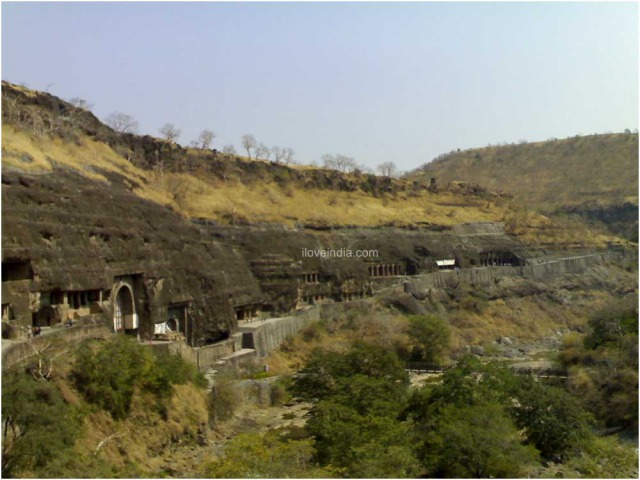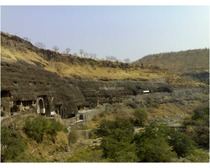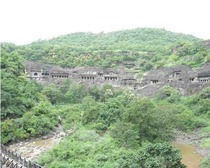Ajanta caves are one of the most famous and beautifully painted architectural masterpieces in India. Check out some interesting and fun facts about Ajanta caves.
Facts About Ajanta Caves
Ajanta Caves are one of the most popular Buddhist monuments in India. They are located just outside the village of Ajintha in Aurangabad district of the state of Maharashtra. The caves are rock-cut monuments dating back to 2nd century B.C. Ajanta caves are famous for their sculptures and paintings, which are considered to be masterpieces of 'Buddhist religious art' and 'universal pictorial art'. Owing to its fine murals, it is now considered to be one of the most important tourist destinations in the world. For some interesting and fun facts about Ajanta caves, read on. 

Interesting & Fun Facts about Ajanta and Ellora Caves
- Ajanta caves were listed amongst the UNESCO World Heritage Sites in 1983.
- Ajanta caves were discovered by an Army Officer in the Madras Regiment of the British Army in 1819.
- Ajanta caves are excavated in a horse shoe shaped rock surface.
- The height of the caves rises up to 76 m, overlooking the Waghora stream.
- Ajanta caves were excavated between 2nd century and 6th century.
- All the caves were connected to the stream with flight of stairs, which are mostly wiped out.
- There are in total 30 excavations found at the site, including an unfinished one.
- Out of the total, five caves are chaityagrihas (stupa monument halls) while the rest are viharas (monastic halls of residence).
- With regard to date and style, the earliest excavations belong to Hinayana sect of Buddhism. This comprises of total five caves, i.e. 9 & 10, which are chaityagrihas while 8, 12, 13 & 15 A are viharas.
- Ajanta caves date back to the pre-Christian era, with Cave 10 being the earliest, dating from the second century B.C.
- Stupas are the object of worship in these caves.
- The caves have been carved such that they seem to imitate the intricacies of wooden construction.
- The second phase of cave construction is different from the earlier one in terms of pattern and layout. It involves depiction of Buddha image, both in sculpture and painting.
- The paintings depicted in the caves also belong to two different phases. The fist phase paintings belong to 2nd century B.C. while the second phase paintings belong to 5th - 6th centuries A.D.
- The main theme of paintings in the caves is the illustration of various Jataka stories and events from the life of Buddha.
- The base surface of the paintings on walls and ceilings consisted of a rough layer of ferruginous earth mixed with rock-grit or sand, vegetable fibres, paddy husk, grass and other fibrous material of organic origin.
- The second coat was of mud and ferruginous earth mixed with fine rock-powder or sand and fine fibrous vegetable material. This surface was finally worked with a thin coat of lime wash.
- Over the lime washed surface, outlines were drawn boldly and spaces were filled with requisite colors in different shades and tones to achieve the effect of rounded and plastic volumes.
- The colors and shades used were red and yellow ochre, terra verte, lime, kaolin, gypsum, lamp black and lapis lazuli.
- The main binding material used in the paintings was glue. Thus, the paintings at Ajanta are not frescoes as they are painted with the help of a binding agent.


See also
More from iloveindia.com
- Home Remedies | Ayurveda | Vastu | Yoga | Feng Shui | Tattoos | Fitness | Garden | Nutrition | Parenting | Bikes | Cars | Baby Care | Indian Weddings | Festivals | Party ideas | Horoscope 2015 | Pets | Finance | Figures of Speech | Hotels in India : Delhi | Hyderabad | Chennai | Mumbai | Kolkata | Bangalore | Ahmedabad | Jaipur
- Contact Us Careers Disclaimer Privacy Policy Advertise With Us Lifestyle Sitemap Copyright iloveindia.com. All Rights Reserved.







